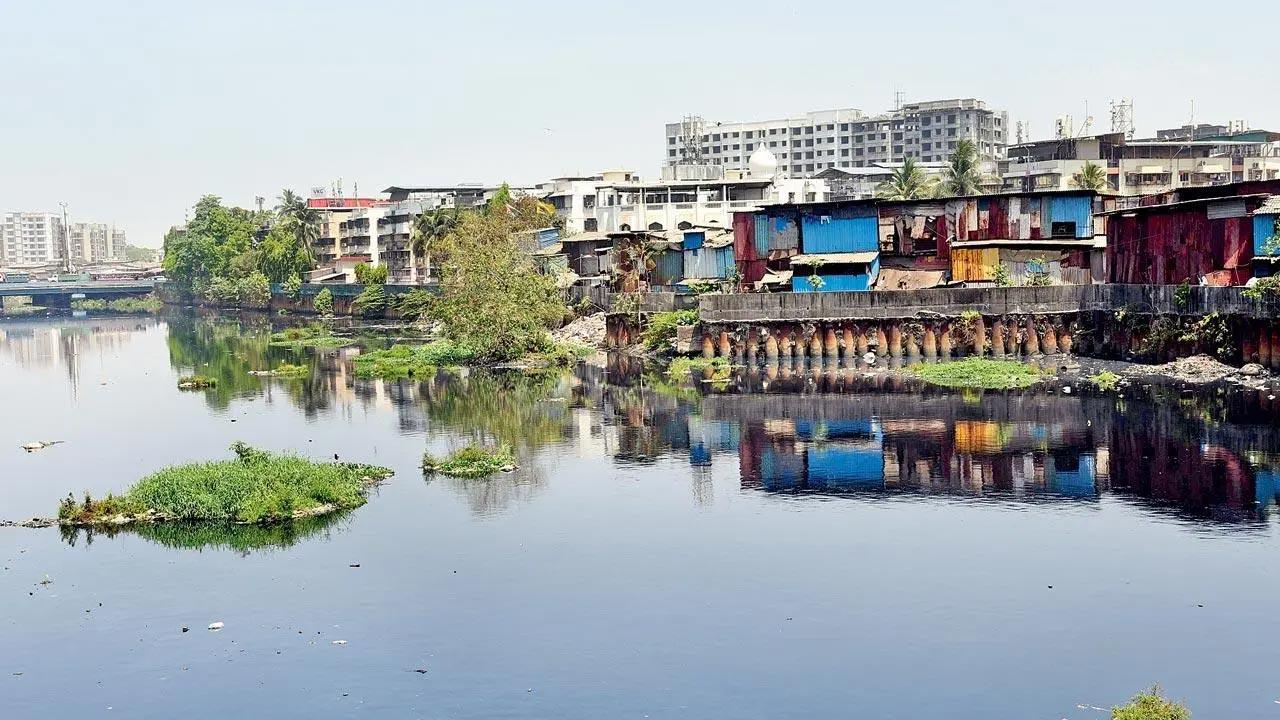The rejuvenation work has a number of aspects, such as constructing retaining walls, building a sewer network to prevent direct discharge into the river and constructing a sewerage line parallel to the river

Encroachments along the banks of Mithi river at BKC. Pic/Pradeep Dhivar
It is Mithi river in the news again, and in a familiar pattern, not for the right reasons. The Mithi river rejuvenation project is falling behind the estimated timeline because of encroachment on the river bank. Officials have cited that encroachment is an obstacle as they do not have enough place for project-affected persons.
ADVERTISEMENT
The rejuvenation work has a number of aspects, such as constructing retaining walls, building a sewer network to prevent direct discharge into the river and constructing a sewerage line parallel to the river.
The work is on in phases and in the race towards completion, different phases are being started, even as officials are planning how to tackle the encroachment problem.
This highlights just how important it is, and this does not apply only to the Mithi river, to not allow encroachment in the first place, placing a premium on alertness and speed when you see encroachments creeping up near public infrastructure.
There is a tendency to allow or simply neglect encroachments which may start by one structure but then multiply fast. When the problem becomes pressing or gargantuan, or there are a rash of complaints, then action begins.
Encroachment structures are like adhesive, the longer they stay at a place, the harder they are to remove. We need to change our course and the way we tackle these by acting at the outset itself rather than starting a ‘clearing’ process later, when it is inordinately much more difficult.
We allow the problem to fester, apply a temporary tourniquet at times by doing notional clearance action, encroachment boomerangs right back and finally, when a project is announced or a clear way needed, only then do we see decisive action.
This is a template conducive to time wasting. Let us see a transformation in how we tackle the most pressing problem in a space-starved city.
 Subscribe today by clicking the link and stay updated with the latest news!" Click here!
Subscribe today by clicking the link and stay updated with the latest news!" Click here!







